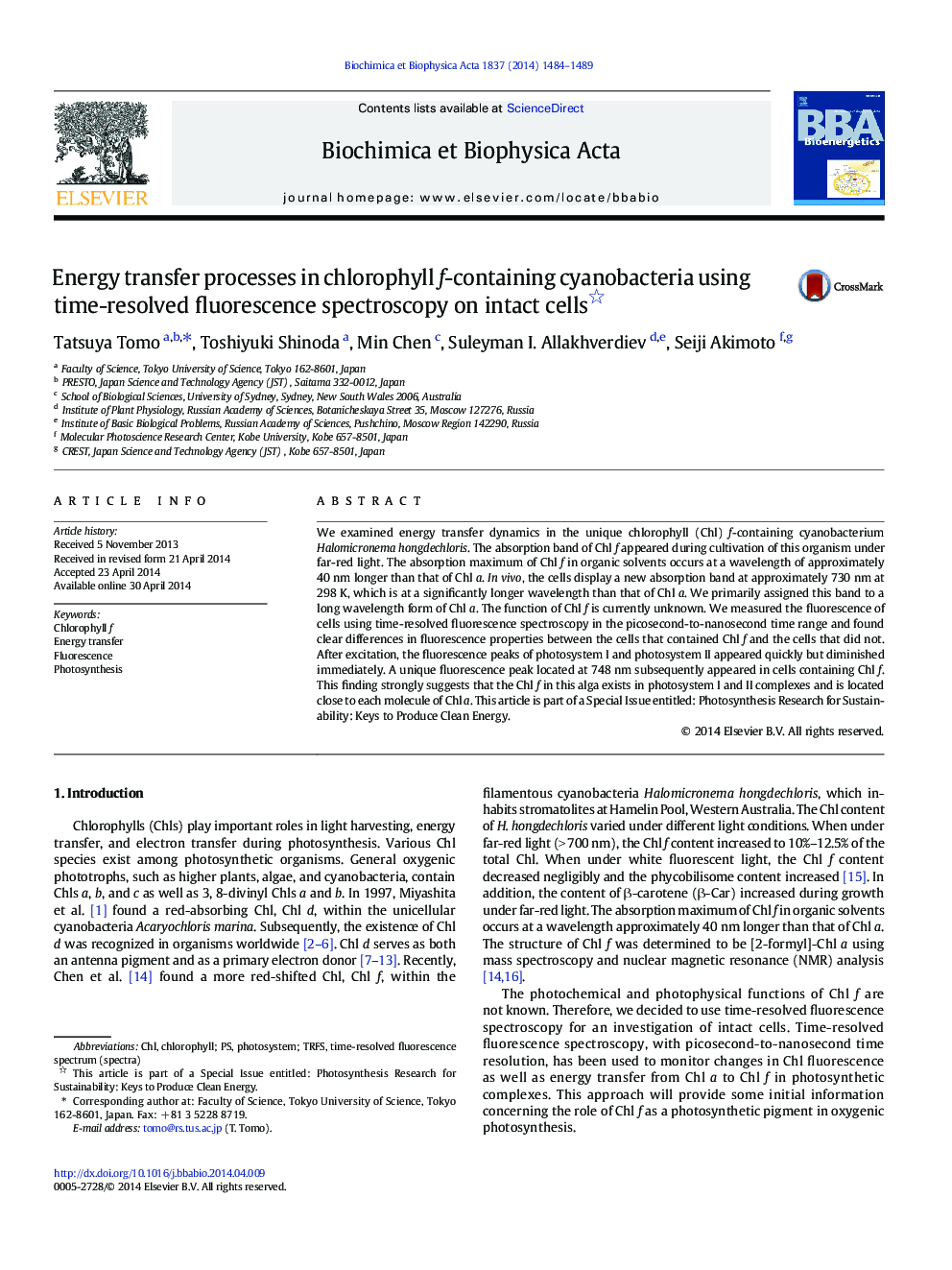| Article ID | Journal | Published Year | Pages | File Type |
|---|---|---|---|---|
| 1942173 | Biochimica et Biophysica Acta (BBA) - Bioenergetics | 2014 | 6 Pages |
•The localization and function of chlorophyll (Chl) f.•We analyzed energy transfer using Chl f-containing cyanobacterium.•Chl f exists in photosystem I and II.•Unique fluorescence properties were revealed.
We examined energy transfer dynamics in the unique chlorophyll (Chl) f-containing cyanobacterium Halomicronema hongdechloris. The absorption band of Chl f appeared during cultivation of this organism under far-red light. The absorption maximum of Chl f in organic solvents occurs at a wavelength of approximately 40 nm longer than that of Chl a. In vivo, the cells display a new absorption band at approximately 730 nm at 298 K, which is at a significantly longer wavelength than that of Chl a. We primarily assigned this band to a long wavelength form of Chl a. The function of Chl f is currently unknown. We measured the fluorescence of cells using time-resolved fluorescence spectroscopy in the picosecond-to-nanosecond time range and found clear differences in fluorescence properties between the cells that contained Chl f and the cells that did not. After excitation, the fluorescence peaks of photosystem I and photosystem II appeared quickly but diminished immediately. A unique fluorescence peak located at 748 nm subsequently appeared in cells containing Chl f. This finding strongly suggests that the Chl f in this alga exists in photosystem I and II complexes and is located close to each molecule of Chl a. This article is part of a Special Issue entitled: Photosynthesis Research for Sustainability: Keys to Produce Clean Energy.
